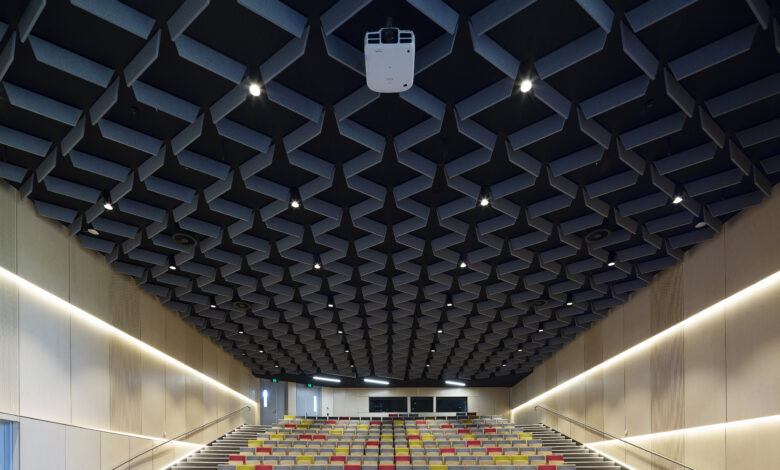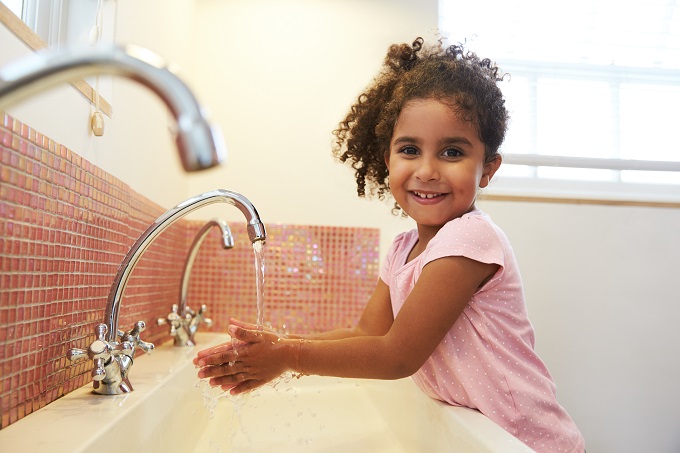Create Quality Learning Spaces with Balanced Acoustics
Australian schools have an acoustic health problem.

A Brisbane-based study of primary school classroom ‘acoustic health’ found a 92 percent “failure rate for occupied sound level and STI against research recommendations for teaching spaces in primary school classrooms in Australia”, meaning students would struggle to process information in these environments. Published in Geohealth journal, the research by scholars from The University of Queensland and Monash University was part of a project on ‘Improved Classroom Acoustics for Autistic Children’, and notes that this evidence “supports long-standing and ongoing calls around the world to systematically improve classroom acoustics”. With acoustic health generally poor, the challenges are significantly greater for students who are neurodiverse, hard of hearing, or who speak English as a Second Language (ESL).
How to design learning spaces with good acoustic health: industry explainer
A specialist in school acoustic design, Autex Australia representative Rob Jones advised School News on some of the most central considerations to factor in 2022.
“Core learning spaces must be designed to allow clear verbal communication between teachers and students while minimising noise disturbance. This means for good speech Intelligibility a reverberant sound field cannot exist!
“With increased use of glazing and open, or visually connected spaces there is less surface area available especially vertical surfaces to control reverberation and noise build-up. With limited available wall surfaces, the ceiling area has to do most of the heavy lifting regarding reverberation control. It’s important to ensure noise is minimised across the entire frequency range to help ensure good levels of speech intelligibility are achievable. This can be accomplished with high NRC rated broadband direct fix panels, ceiling tiles or, increasingly, by using absorptive baffles and fin systems that better suit modern visual design and environmental principles that encompass material reuse via ease of disassembly and high recycled content. Lateral reflections and echoes in larger open spaces still must can be controlled with acoustic wall linings, or screens where visual separation is required.
“There are two primary type of noise absorption products available,” he explained: “Porous and resonant types. Both are used on ceilings and walls. Porous absorbers are the most common and usually the most cost effective. Thicker versions offer broad band absorption for direct fixing to the substrate or fitted into ceiling tile grid systems. Baffles and fins can be clustered together more densely or made deeper to suit the unique requirements of the space. For education environments, highly durable PET linings are ideal for wall applications as they can provide not just noise reduction properties but also functional display areas.
“The second most common type of absorptive products are called resonant absorbers. These options often take the form of perforated or slotted panels. Offering often significant variations in performance based on the airspace behind, perforation diameter and open area. Typically used as ceiling linings and for walls in larger auditorium or gymnasiums.”
Acoustic classroom design has also had to adapt to new flipped/digital learning needs. On this, Rob suggested “more three dimensional, suspended custom designed ceilings rather than drop in ceiling tiles. These options can provide both visual delineation to assist in spatial zoning while being highly efficient at controlling reverberation and reducing noise flow within these acoustically coupled spaces. Spaces specifically for video conferencing have specific acoustic requirements and specialist design advice from an acoustic consultant should be obtained.
New facility acoustics versus retrofit acoustics?
Rob advised us that the acoustic objectives in each case are effectively the same. He said: “Learning spaces must be designed to allow clear verbal communication between teachers and students while minimising noise disturbance. If it is a major refit, then the performance requirements prescribed in the local education departments design guidance are the same as a new build.
“If it is more of a cosmetic upgrade, there is some leeway in achieving the acoustic performance. However, it should as closely meet the performance requirements as possible. Significant improvements in performance can be obtained by installing continuous acoustic wall coverings to all available vertical surfaces. This option provides more meters of acoustic absorption lowering reverberation, improved acoustic separation between adjoining spaces, and provides large areas of display space. Especially useful for primary schools, these solutions typically don’t require high levels of surface preparation and don’t require any further finishing, such as painting meaning they can be very cost-effective solutions.
“For all acoustic treatments, always ensure that fire and acoustic ratings are checked before installing. An audit revealed budget retail brands often don’t have the required compliance or performance information available for use in educational facilities.”







